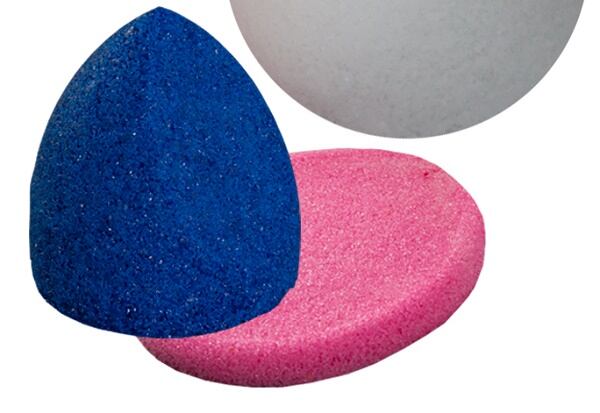Many formulators have turned to natural-based preservatives, or have even gone to extreme lengths in developing preservative-free formulations in an effort to meet these consumer expectations.
The approach of US-based formulation solutions provider Porex, the solution has been a little different, through the development of its antimicrobial barrier technology that focuses on the applicator instead of the actual formulation to reduce the need for preservatives in a range of colour cosmetics.
Rusty Martin is the global strategic marketing director for Porex industrial and consumer segments. He spoke to Cosmetics Design, and explained how the recent launch of its Nubiform applicator technology for a variety of products, including foundations, liquid eye liners, eye shadow and lip stains, to name a few.
Below Martin answers a number of questions that relate to the challenge of formulating with or without preservatives, and that specific areas in which he believes Porex can help.
What are the biggest challenges that your clients are facing when it comes to preservatives?
One of the challenges cosmetics designers currently face is the demand for a lower concentration of preservatives within formulations, as well as a desire to remove virtually all preservatives, especially in Europe.
The challenge, however, lies in the lack of knowledge and technology to enable this preservative-free content while simultaneously keeping products safe and hygienic for consumers. Consumer use of cosmetics is an additional challenge. Customers often ignore instructions for applicator maintenance and do not cleanse them as frequently as they should.
Porex Barrier Technology is designed to bridge the gap between how cosmetics are supposed to be used and how they are actually used in reality.
Are more and more of your clients demanding natural-based preservative solutions? If so, what is Porex doing about this?
More companies are certainly coming out with natural-based products, and they are avoiding the word “preservative” to avoid any negative customer associations with unfamiliar or potentially harmful chemicals. Terms like “organic” and “natural” are much more prevalent in the market these days. It’s important to note that bacteria is spread from the skin, so if you can kill bacteria on a cosmetic applicator and prevent the exchanging of germs, then

you can reduce the amount of preservatives in your formula. This is the unique angle Porex has taken with our antimicrobial technology.
Porex Barrier Technology can be incorporated into our innovative elastomer Nubiform, where it is built directly into the cosmetic applicator itself. The component is embedded within the complex structure of our products, and because it is bound it does not leach or wash out. There are solid plastics on the market that have antimicrobial properties, but we believe our product is the only porous media containing this antimicrobial capability.
What kind of technology or solutions are on the market that enable formulators to use less preservatives?
Some companies are using what they refer to as “naturally occurring” preservatives, which are typically derived from fruits and vegetables. Honey is a prime example of this type of natural antimicrobial. An important difference with our Porex Barrier Technology, however, is that it provides greater consumer protection by killing bacteria on contact. It goes beyond the standard of simply preventing growth, and actually proactively attacks harmful microbes.
Following on from the last question, can you explain about the development of the Nubiform brand?
In developing Nubiform, we knew that our goals were flexibility and customization, combined with superior hygiene that could keep consumers safe. We addressed the need for optimized cleanliness by pairing Nubiform with the Porex Barrier Technology.
In our research around the most effective antimicrobial protection, we specifically identified agents that would be useful in killing bacteria that are most commonly found on faces, lips and hands. We did testing on these specific bacteria in order to develop a product that would be particularly useful for cosmetics brands seeking a more natural label without having to compromise product performance.
How has the regulation of preservatives changed the preservatives category? Has regulation made things more difficult, and if so, why?
It’s safe to say that the cosmetics industry and regulators are trying to work together to reduce the number of preservatives used in cosmetics. By far the greater pressure seems to be coming from consumers who demand natural products.
Brands want to meet these requests, but eliminating preservatives is risky, because removing preservatives from a water-based formula can result in harmful bacterial growth. Smaller brands are at an even greater risk with this venture, because they lack the chemical expertise for validating testing and conducting other research-based activities.
6. How do you see the development of preservatives for beauty and personal care progressing over the course of the next ten years?
If we take a look at what’s happening now, it is clear that brands are changing their labels. Fewer preservatives and fewer chemical-sounding ingredients are present on packaging. We’re also witnessing consumers becoming increasingly involved with and informed on cosmetics.
In the years to come, there will likely be pressure to use more sustainable materials and less-toxic materials within makeup products. In general, people are connecting more and more over makeup. There is a trend on both the cosmetic brand and consumer side in eliminating the “problematic” preservatives—for example, synthetically produced parabens. Naturally based preservatives are also trending.
I think it’s fair to say there will also be an increasing focus on the applicator itself. The fact that our technology kills bacteria on the spot—in the applicator itself—could be a game-changer for brands seeking to go preservative-free.
